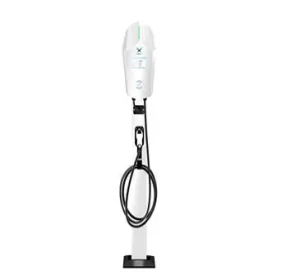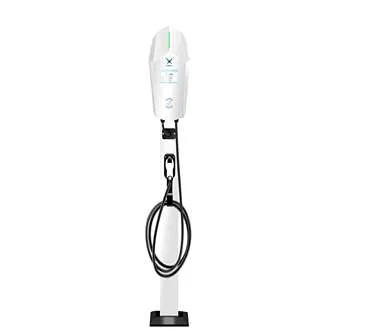Electric vehicles (EVs) are now everywhere, and you may be considering whether to get one for yourself. If you’re in the market for a new EV, it’s essential to understand everything about EV charging. This article will explain the key differences between the main EV charging methods, along with the pros and cons of each.
Level 1 Charging
Level 1 (L1) charging may sound complex, but it’s actually quite simple. When you purchase an EV, it typically comes with a charging adapter directly from the manufacturer. This adapter can be plugged into any standard 120V household outlet, meaning you can start charging your EV from day one without the need for any electrical upgrades.
The main drawback of Level 1 charging is its slow speed. L1 charging restores approximately 5 miles of range per hour, which translates to about 50 miles of range overnight—sufficient for most daily commutes. One advantage of L1 charging is that it charges your vehicle gradually, reducing stress on the battery and minimizing long-term degradation.
Level 2 Charging
For those who drive longer distances daily, a Level 2 (L2) charger is a more practical option. Unlike L1 charging, installing an L2 charger requires the assistance of a professional electrician, as it operates on a 240V outlet.
L2 charging significantly reduces charging time and can fully charge most EVs overnight. This makes it ideal for drivers who travel more than 50 miles per day. However, frequent use of L2 charging can slightly impact battery longevity, as it regularly brings the battery close to full capacity. Nonetheless, since an EV is primarily a transportation tool, charging it according to your needs should not be a concern.

Level 3 Charging (DC Fast Charging)
Level 3 (L3) charging, also known as DC fast charging, is the quickest way to recharge an EV. To illustrate its speed, consider the Hyundai IONIQ 5—an L3 charger can charge its battery from 10% to 80% in just 18 minutes. This makes L3 charging perfect for long-distance trips where rapid recharging is essential.
Unlike L1 and L2 chargers, L3 chargers are not designed for home use. They require specialized infrastructure and are typically found in public charging stations. Installing one at home is neither practical nor necessary, as these chargers are widely available along highways and in urban centers.
While frequent use of DC fast chargers may accelerate battery degradation, occasional use should not be a major concern. Moreover, many public DC fast chargers are free to use, and some EV manufacturers even offer complimentary fast charging for a limited time. For instance, Audi provides two years of free fast charging on the Volkswagen-owned Electrify America network for eligible vehicle purchases.
L1 vs. L2 vs. L3 Charging: Which Is Best?
There is no single “best” charging method—each serves a different purpose. The ideal choice depends on your driving habits and charging needs:
-
L1 Charging: Best for short-distance commuters who drive less than 50 miles per day and have overnight charging time.
-
L2 Charging: Ideal for frequent drivers who exceed 50 miles daily and need a faster, more convenient home charging solution.
-
L3 Charging: Essential for long trips but limited to public stations, making it a useful supplement rather than a primary charging method.
For EV buyers, planning ahead is crucial. If you expect L1 charging to be insufficient, installing an L2 charger before purchasing an EV is a smart move.
The Future of EV Charging
The increasing availability of different EV charging speeds gives drivers more flexibility—a significant advantage as the world shifts toward electric mobility. With EV adoption on the rise, charging stations are expected to replace traditional gas stations as the primary source of vehicle power.
The greatest benefit of EV ownership is the ability to charge at home, eliminating the need for frequent stops at charging stations. For those with an L2 home charger, charging becomes even more convenient, ensuring their EV is always ready for the road.


